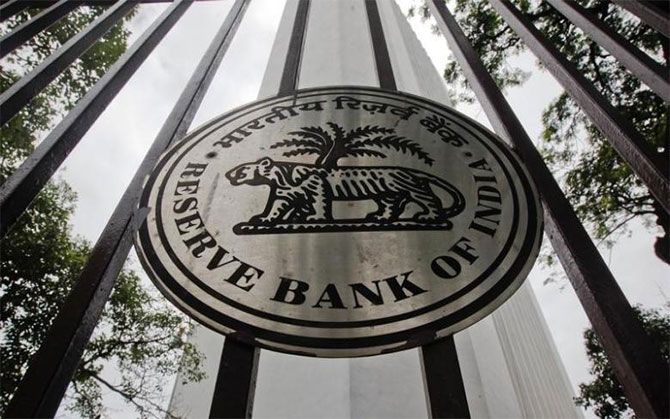Achieving inflation target of 4 per cent, recovery after remonetisation and hardening profile of oil prices are some of the risks which the RBI is watching closely, says Gaurav Kapur.

With a shift in policy stance to 'neutral' from 'accommodative' in the February meeting while keeping the repo rate unchanged, the monetary policy committee (MPC) had set the stage for a prolonged pause on rates.
A pause is indeed the most likely outcome of the April policy, too. The MPC will continue to review the incoming data on inflation and growth, in order to assess how the key risks to achieving its inflation objective of four per cent materialise or dissipate.
The minutes from the February meeting indicated that a neutral stance does not exclude the possibility of a rate cut, but any future action will be data-dependent.
In its endeavour to achieve the inflation target of four per cent, sticky core inflation at around five per cent, demand recovery after remonetisation, US Federal Reserve's rate hikes over 2017, and hardening profile of oil prices, were listed as the main concerns and risks which the MPC is watching closely.
Since the February policy, developments around these concerns have been largely positive.
Core inflation has eased below five per cent. Output of foodgrains at 272 million tonnes in 2016-17 will rise 7.8 per cent over the previous year, helping keep food inflation in check.
Global economic conditions have turned broadly supportive, too. Oil prices have stabilised after witnessing a spike in November 2016 driven by Opec (Organization of the Petroleum Exporting Countries)'s output cut.
The US Fed raised rates in March and indicated that while it would raise rates twice more in 2017, it will not reduce the size of its balance sheet, thereby keeping market liquidity intact.
And, a pickup in trade and growth in emerging markets in the first quarter of 2017 has seen capital flows turn positive.
India has been a net recipient of Foreign Institutional Investors' inflows worth $10.5 billion since February, which in turn has helped rupee appreciate by 4.6 per cent in the first quarter of 2017. A stronger rupee is helpful in keeping imported inflation in check.
However, the MPC is likely to remain cautious and will await more information to decide whether the risks to inflation have indeed dissipated sustainably or not.
The data available since last policy are not conclusive. Moreover, the outcome of monsoon is still uncertain and with the ongoing remonetisation, prices of perishables are likely to recover and push up food inflation.
The tone policy statement itself will be crucial. The developments since last policy should help MPC tone down its hawkishness in the April statement.
Gaurav Kapur is chief economist of IndusInd Bank Ltd. Views are personal.
Photograph: Danish Siddiqui/Reuters






